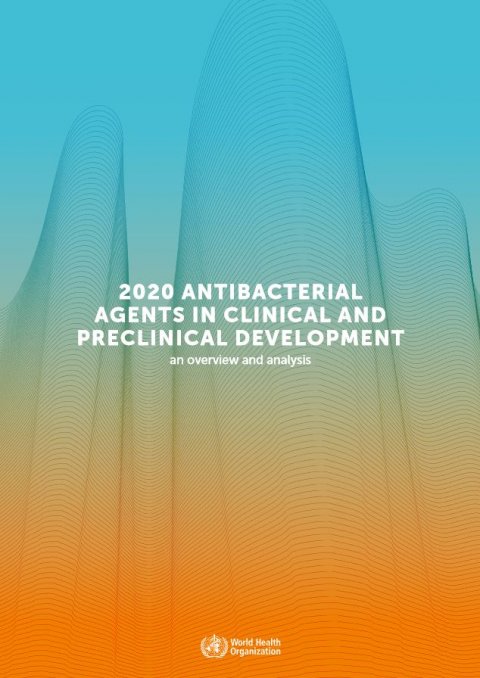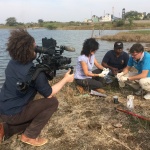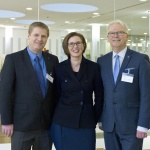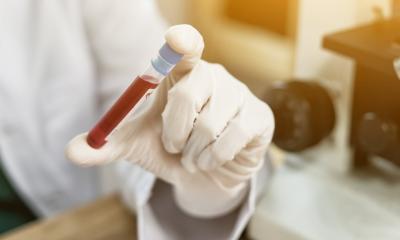Image source: Unsplash/Nastya Dulhiier
News • Spread of drug-resistance
WHO reports global shortage of innovative antibiotics
The world is still failing to develop desperately needed antibacterial treatments, despite growing awareness of the urgent threat of antibiotic resistance, according to a new report by the World Health Organization.

WHO reveals that none of the 43 antibiotics that are currently in clinical development sufficiently address the problem of drug resistance in the world’s most dangerous bacteria. “The persistent failure to develop, manufacture, and distribute effective new antibiotics is further fueling the impact of antimicrobial resistance (AMR) and threatens our ability to successfully treat bacterial infections,” says Dr. Hanan Balkhy, WHO Assistant Director General on AMR.
Almost all the new antibiotics that have been brought to market in recent decades are variations of antibiotic drugs classes that had been discovered by the 1980s. The impact of AMR is most severe in resource-constrained settings and among vulnerable groups such as new-borns and young children. Bacterial pneumonia and bloodstream infections are among the major causes of childhood mortality under the age of 5. Approximately 30% of neonates with sepsis die due to bacterial infections resistant to multiple first-line antibiotics, according to an article published in The Lancet Global Health.
Report findings:
Overall, the clinical pipeline and recently approved antibiotics are insufficient to tackle the challenge of increasing emergence and spread of antimicrobial resistance
WHO’s annual Antibacterial Pipeline Report, reviews antibiotics that are in the clinical stages of testing as well as those in early product development. The aim is to assess progress and identify gaps in relation to urgent threats of drug resistance, and to encourage action to fill those gaps. The report evaluates the potential of the candidates to address the most threatening drug-resistant bacteria outlined in the WHO Bacterial Priority Pathogens List (WHO PPL). This list, which includes 13 priority drug-resistant bacteria, has informed and guided priority areas for research and development since its first publication in 2017.
The 2020 report reveals a near static pipeline with only few antibiotics being approved by regulatory agencies in recent years. Most of these agents in development offer limited clinical benefit over existing treatments, with 82% of the recently approved antibiotics being derivatives of existing antibiotic classes with well-established drug-resistance. Therefore, rapid emergence of drug-resistance to these new agents is expected. The review concludes that “overall, the clinical pipeline and recently approved antibiotics are insufficient to tackle the challenge of increasing emergence and spread of antimicrobial resistance”.
Recommended article

Article • Fighting infections
‘We are sitting on a ticking time bomb’
Multidrug-resistant organisms (MDRO) are keeping infection specialists worldwide on their toes. One of these specialists travelled all the way from Leipzig to India to gain insights in one of the sources of the problem.
Novel solutions outside the traditional development pathway:
The lack of progress on antibiotic development highlights the need to explore innovative approaches to treat bacterial infections. The 2020 WHO pipeline report for the first time includes a comprehensive overview of non-traditional antibacterial medicines. It highlights 27 non-traditional antibacterial agents in the pipeline ranging from antibodies to bacteriophages and therapies that support the patient’s immune response and weaken the effect of the bacteria.
High failure rates and impact on market dynamics:
The report notes that there are some promising products in different stages of development. However, only a fraction of these will ever make it to the market due to the economic and inherent scientific challenges in the drug development process. This, along with the small return on investment from successful antibiotic products, has limited the interest of major private investors and most large pharmaceutical companies. The report confirms that the preclinical and clinical pipeline continue to be driven by small- and medium-sized companies. These enterprises often struggle to finance their products to the late stages of clinical development or until regulatory approval is obtained.
Recommended article

Article • Medication development
Support from the other end of the world
Partners who could hardly be further apart – yet have a lot in common – have united to fight resistant pathogens. The International Consortium for Anti-Infective Research (iCAIR) is based in Germany and Australia – separated by nearly 16,000 km as the crow flies. This has not stopped the research cooperation from achieving its objectives: the development of new agents against infections.
The Covid-19 opportunity:
Antibiotics present the Achilles heel for universal health coverage and our global health security
Haileyesus Getahun
The Covid-19 crisis has deepened the global understanding of the health and economic implications of an uncontrolled pandemic. It also accentuated the gaps in sustainable funding to address these risks, including investments in R&D of antimicrobial medicines and vaccines, whilst revealing what rapid progress can be made when there is enough political will and enterprise. “Opportunities emerging from the Covid-19 pandemic must be seized to bring to the forefront the needs for sustainable investments in R&D of new and effective antibiotics,” said Haileyesus Getahun, Director of AMR Global Coordination at WHO. “Antibiotics present the Achilles heel for universal health coverage and our global health security. We need a global sustained effort including mechanisms for pooled funding and new and additional investments to meet the magnitude of the AMR threat.”
Global Initiatives:
To address gaps in funding and drive sustainable investments in antibiotics development, WHO and its partner Drugs fro Neglected Diseases intitive (DNDi) have set up the Global Antibiotic R&D Partnership (GARDP) to develop some of the innovative treatments that are included in the report. In addition, the WHO has been working closely with other non-profit funding partners such as the CARB-X to “push” and accelerate antibacterial research.
Another important new initiative is the AMR Action Fund, a partnership that was set up by a coalition of pharmaceutical companies, philanthropies, the European Investment Bank, with the support of the WHO, that aims to strengthen and accelerate antibiotic development through global pooled funding. The Fund is expected to play an important role in ensuring that the most innovative and promising products receive the required funding.
Source: World Health Organisation
18.04.2021






